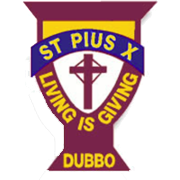Medication
Medications will not be given unless an official form is completed by the parents. These are available from the Office. Only medication prescribed by a doctor can be administered. This medication will be kept in the Office and administered only by the authorised personnel. Unprescribed medication may be administered by school personnel but only if the appropriate form is completed and signed by the parent. Click here to download the Medication Form.
Sickness/Injury at School
If a child reports sick or is hurt or injured seriously enough to require further attention, the school will ring the parent. If we are unable to notify the parent, an effort will be made to contact the person nominated to accept responsibility.
Healthy Eating - Crunch & Sip
Every child deserves the best start in life. Good eating habits formed during childhood help children grow well and protect them against disease in later life.
Too many children are not eating enough of the foods essential to good health. Fruit and vegetable consumption is particularly low. Results of government research on primary school aged children in Western Australia found that, on any given day:
• Four out of 10 eat no fruit
• Three out of 10 eat no vegies
• Half eat confectionery
We have introduced Crunch & Sip at St Pius X to encourage healthy eating. Please click here for detailed information......
Allergy Awareness
We have students at St Pius that are highly allergic and have EpiPens. Parents are encouraged not to send nut products in children’s recess and lunch boxes. Please download and complete the Allergies Form for your child - even if your child doesn't have an allergy.
Infectious Diseases
The NSW Government has developed a Fact Sheet about Childhood Infectious Diseases. The Fact Sheet provides details about the illnesses and also whether or not the child affected needs to be kept at home. Click here to access the Fact Sheet.
Sun Safety
Children are required to wear their school hat to and from school and during all outdoor activities. Children are encouraged to wear sun-screen at all times.
Headlice
If there is an outbreak of head lice at the school, we ask all parents to examine their child’s hair for signs of lice infestation. The lice themselves are often hard to find because they move around on the head. Therefore, you should be looking for the eggs or nits. These appear as tiny silvery white specks attached to the hair shaft near the scalp. Dandruff and hairspray may look similar but these are easily brushed away, the eggs are not. Other signs of lice infestation may be a red rash and scratch marks on the scalp, nape of the neck or behind the ears.
If your child has contracted head lice do not be alarmed. Although the condition is unpleasant, it is easily treated with a specialised treatment available on request at your local pharmacy. After using the product (according to the directions) use a fine tooth comb to remove the dead lice and eggs. Any articles which may harbour lice such as clothes, towels and bed linen should be washed in hot water and detergent. Combs and brushes should also be washed in hot soapy water.
As head lice are highly contagious it is suggested that you examine and treat all members of the family at the same time.
